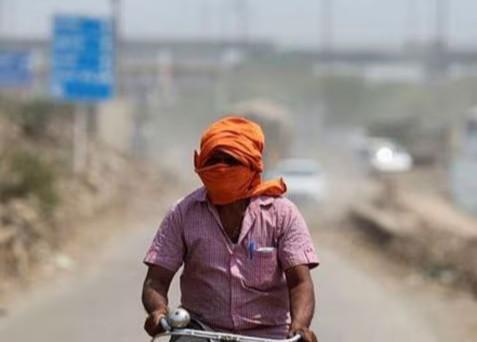
Extreme Heat Endangering Health & Productivity of Workers: Report
As the world continues to grapple with the effects of climate change, a recent report by the World Health Organisation (WHO) and the World Meteorological Organisation (WMO) has sounded a warning bell about the extreme heat levels that are not only posing a threat to human health but also impacting worker productivity. According to the report, worker productivity drops by 2-3% for every degree above 20°C, which is a staggering statistic that highlights the need for immediate action to protect workers from the scorching heat.
The report, which was published on [date], emphasizes that manual workers in agriculture, construction sectors, and vulnerable populations like children and the elderly in developing countries are particularly at risk. These individuals are more susceptible to heat-related illnesses, which can have severe and long-lasting consequences.
Heat-related illnesses, such as heatstroke and dehydration, are a major concern in hot weather conditions. Prolonged exposure to high temperatures can cause the body to lose its ability to regulate its temperature, leading to a range of symptoms including headaches, fatigue, nausea, and even kidney dysfunction. In severe cases, heatstroke can be life-threatening, making it essential to take prompt action to prevent and treat these conditions.
The report highlights that the impact of extreme heat on workers is not limited to their physical health. Heat stress can also affect their mental well-being, leading to anxiety, stress, and decreased morale. This, in turn, can have a ripple effect on their overall productivity and job satisfaction. In extreme cases, heat-related illnesses can even result in lost workdays, absenteeism, and reduced job performance.
The consequences of heat-related illnesses are far-reaching and can have significant economic and social implications. According to the report, heat stress can result in an estimated 6% loss in global productivity, which translates to a significant economic burden. Moreover, the impact of heat-related illnesses can also be seen in the increased healthcare costs, lost wages, and decreased economic output.
The report highlights that the risk of heat-related illnesses is not limited to workers in high-temperature industries. Any individual who spends extended periods outdoors or engages in physical activity in hot weather conditions is at risk. This includes workers in agriculture, construction, transportation, and other industries that require physical labor.
To mitigate the impact of extreme heat, the report recommends a range of measures, including:
- Providing adequate shade and cooling measures for workers
- Encouraging workers to take regular breaks and stay hydrated
- Implementing heat stress prevention programs
- Providing training on heat-related illnesses and their symptoms
- Encouraging employers to adopt heat stress prevention policies
The report also emphasizes the need for policymakers and employers to take proactive measures to protect workers from the effects of extreme heat. This includes implementing heat stress prevention policies, providing adequate resources and training to workers, and promoting awareness about the risks associated with heat-related illnesses.
In conclusion, the report by the World Health Organisation and the World Meteorological Organisation highlights the urgent need for action to protect workers from the devastating effects of extreme heat. As the world continues to grapple with the effects of climate change, it is essential that we take proactive measures to protect the health and productivity of workers. By implementing heat stress prevention programs, providing adequate resources and training to workers, and promoting awareness about the risks associated with heat-related illnesses, we can mitigate the impact of extreme heat and ensure a healthier and more productive workforce.
Source:
https://repository.inshorts.com/articles/en/PTI/45d9bd2d-ff57-417c-9e5f-831344bb34b0






